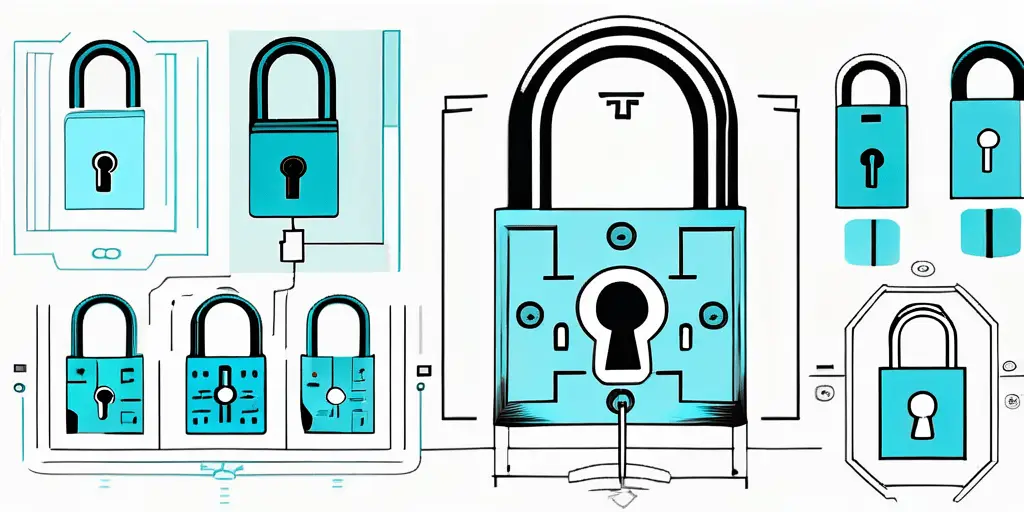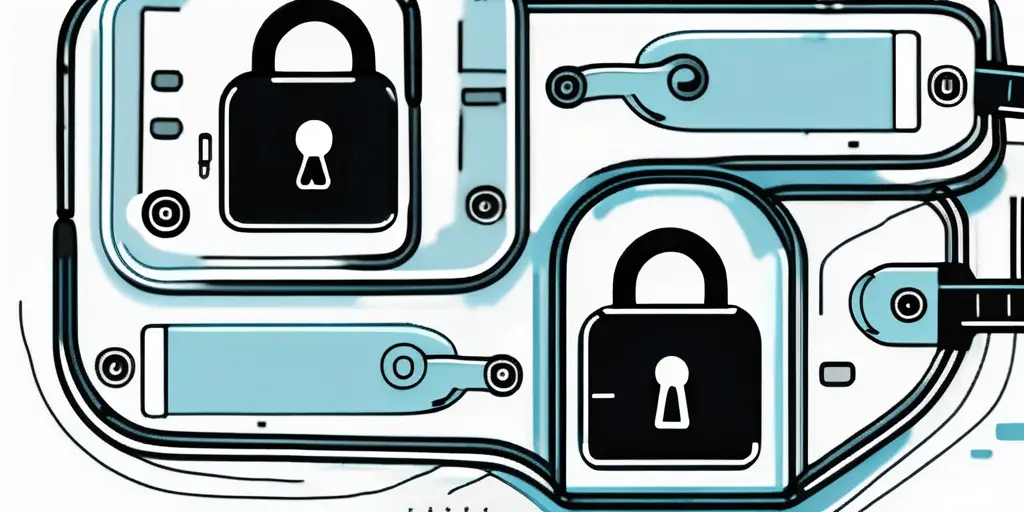In today’s digital age, encryption is crucial in securing our personal and sensitive data. It ensures that our private conversations, financial transactions, and confidential information remain safe from prying eyes. However, just as encryption is designed to protect our data, individuals and organizations are constantly striving to break it. In this article, we will explore three methods adversaries use to break encryption and gain unauthorized access to encrypted data.
Understanding the Basics of Encryption
Before delving into the various methods of breaking encryption, it is important to understand the fundamentals. Encryption is the process of encoding information in such a way that only authorized parties can access it. It involves transforming plain text into unintelligible cipher text using an encryption algorithm and a secret key. The recipient needs the correct decryption key to decrypt the cipher text and retrieve the original information.

Encryption serves as a vital tool in maintaining data security, ensuring confidentiality, integrity, and authenticity. Without encryption, sensitive information such as credit card details, passwords, and personal messages would be vulnerable to interception and misuse. Let’s explore why encryption holds such significance in data security.
Encryption technology has evolved over the years, with modern encryption algorithms employing complex mathematical functions to secure data. Advanced Encryption Standard (AES), for example, is a widely used symmetric encryption algorithm that offers a high level of security by using keys of various lengths.
Another crucial aspect of encryption is key management. Proper key management practices are essential for ensuring the security of encrypted data. This includes securely generating, storing, and distributing encryption keys to authorized parties while protecting them from unauthorized access.
What is Encryption?
Encryption is a process that protects data by transforming it into an unreadable format, known as cipher text. Only those with the corresponding decryption key can revert the cipher text back to its original form, known as plain text.
Importance of Encryption in Data Security
Encryption plays a pivotal role in safeguarding data against unauthorized access and maintaining the confidentiality of sensitive information. Whether it’s protecting financial records, medical history, or personal messages, encryption ensures that only intended recipients can access the data.
The Science Behind Breaking Encryption
While encryption provides robust security measures, it is not foolproof. Determined adversaries employ various techniques to break encryption and gain access to sensitive information. To comprehend these methods, it is imperative to understand the science behind encryption and the vulnerabilities adversaries exploit.

One crucial aspect to consider in breaking encryption is the concept of key length. Encryption algorithms use keys to encrypt and decrypt data. The length of the key plays a significant role in determining the strength of the encryption. Longer keys provide higher levels of security as they increase the complexity of the encryption process, making it more challenging for adversaries to crack the code.
The Role of Algorithms in Breaking Encryption
Encryption relies on encryption algorithms, which are mathematical functions that convert plain text into cipher text. The strength of encryption depends on the complexity of the algorithm used. Adversaries attempt to exploit vulnerabilities within these algorithms to uncover the encryption keys and decipher the encrypted data.
Moreover, the evolution of quantum computing poses a potential threat to traditional encryption methods. Quantum computers can solve complex mathematical problems at a much faster rate than classical computers. This advancement in technology could potentially render current encryption algorithms vulnerable to attacks, emphasizing the need for continuous innovation in cryptographic techniques.
Understanding Cryptanalysis
Cryptanalysis refers to the systematic study of cryptographic algorithms to break them. It involves analyzing the algorithm’s weaknesses, identifying patterns, and exploiting vulnerabilities that can lead to the decryption of the encrypted data.
Furthermore, adversaries often employ side-channel attacks to break encryption. These attacks focus on exploiting unintended information leakage during the encryption process, such as power consumption or electromagnetic emissions. By analyzing these side channels, attackers can gather valuable information that aids in decrypting the data without directly attacking the encryption algorithm itself.
Method 1: Brute Force Attack
One of the most straightforward yet resource-intensive methods used to break encryption is a brute force attack. In this method, adversaries systematically try every possible combination of keys until they find the correct one and decrypt the cipher text.
Brute force attacks are often considered a last resort when all other cryptographic attacks fail. They are known for their simplicity in concept but complexity in execution, requiring a significant amount of computational power and time to be successful. These attacks leave no stone unturned, trying every possible key until the right one is discovered.
How Brute Force Attacks Work
Brute force attacks involve trying all possible keys until the correct one is found. This method requires significant computational power and time, particularly for encryption algorithms with longer key lengths. As key length increases, the number of possible combinations exponentially grows, making this method increasingly impractical and time-consuming.
Furthermore, brute force attacks can be parallelized to some extent, utilizing multiple computing resources simultaneously to speed up the process. This distributed computing approach can help in reducing the time needed to crack the encryption, especially when dealing with modern encryption standards.
Limitations and Risks of Brute Force Attacks
Despite its effectiveness in theory, brute force attacks are hindered by several practical limitations. The primary limitation lies in the resources required to carry out the attack. Increasing the key length exponentially increases the computational power and time required to test each combination, rendering this method infeasible for breaking encryption with strong algorithms and sufficiently long keys.
Moreover, brute force attacks can also be thwarted by implementing additional security measures like rate limiting login attempts or using key stretching techniques that slow down the key derivation process. These countermeasures add layers of protection against brute force attacks, making them even more challenging to execute successfully.
Method 2: Side-Channel Attacks
Side-channel attacks capitalize on information unintentionally leaked by devices during the encryption process. Unlike brute force attacks, which target the encryption algorithm itself, side-channel attacks exploit weaknesses or vulnerabilities in the physical implementation of the algorithm.
Side-channel attacks are a fascinating area of cybersecurity research that delves into the intricate details of how information can be inadvertently revealed during the encryption process. These attacks operate on the premise that even the most secure encryption algorithms can inadvertently leak information through various channels, providing attackers with a potential entry point to compromise the system.
The Concept of Side-Channel Attacks
Side-channel attacks focus on collecting data that inadvertently leaks during the encryption process. These sources of information include power consumption, electromagnetic emissions, timing measurements, and even sound. By analyzing these side-channel leaks, adversaries can gain insights into the internal workings of the encryption process and determine the encryption key.
Understanding the concept of side-channel attacks requires a deep dive into the physical implementation of encryption algorithms. It highlights the importance of focusing on the theoretical strength of an encryption method and considering the practical vulnerabilities that may exist in its real-world application.
Techniques in Side-Channel Attacks
There are several techniques used in side-channel attacks, such as power analysis, timing analysis, electromagnetic analysis, and fault injection attacks. Each technique involves observing or manipulating specific side-channel information to gain knowledge about the encryption keys.
Power analysis attacks, for example, involve monitoring the power consumption of a device during encryption to infer information about the cryptographic keys being used. Timing analysis attacks focus on measuring the time taken to perform encryption operations, which can reveal patterns that expose the encryption key. Electromagnetic analysis exploits the electromagnetic radiation emitted by a device during encryption, providing insights into the internal operations. Fault injection attacks involve intentionally introducing faults into the encryption process to observe how the system responds and potentially extract sensitive information.
Method 3: Cryptanalysis of the Encryption Algorithm
Cryptanalysis is the process of analyzing encryption algorithms to find weaknesses or vulnerabilities that can be exploited to break the encryption. This method focuses on studying the inner workings of the algorithm rather than extracting information from side channels or attempting all possible keys.

The Process of Cryptanalysis
Cryptanalysis involves a meticulous analysis of the encryption algorithm, looking for patterns, flaws, or vulnerabilities that could potentially weaken its security. By identifying weaknesses in the algorithm, adversaries can develop more efficient and effective methods to break the encryption.
One common approach in cryptanalysis is differential cryptanalysis, which is a statistical method that compares pairs of plaintext and corresponding ciphertext to find patterns in the encryption process. By analyzing the differences between the pairs, cryptanalysts can gain insights into the algorithm’s behavior and potentially exploit its weaknesses.
Common Tools Used in Cryptanalysis
Various software tools and mathematical techniques are employed in cryptanalysis to analyze encryption algorithms. These include differential cryptanalysis, linear cryptanalysis, algebraic attack frameworks, and automated search tools. These tools assist in discovering patterns and weaknesses within the algorithm, enabling adversaries to exploit these vulnerabilities and break the encryption.
Another powerful tool in cryptanalysis is side-channel analysis, which involves analyzing unintended information leakage from the cryptographic system. This can include analyzing power consumption, electromagnetic radiation, or even acoustic emanations produced during the encryption process. By carefully studying these side channels, cryptanalysts can gain valuable information about the internal state of the algorithm and potentially crack the encryption.
As technology continues to evolve, encryption algorithms will become more sophisticated, making it increasingly challenging for adversaries to break encryption. However, it is essential for individuals and organizations to remain vigilant, stay up-to-date with the latest encryption techniques, and adopt robust security measures to protect their valuable data.
As the digital landscape evolves, so do the methods used by adversaries to compromise your encrypted data. Understanding the complexities of encryption and the potential vulnerabilities is just the first step in safeguarding your business’s digital assets. Blue Goat Cyber, a Veteran-Owned leader in cybersecurity, offers a comprehensive suite of B2B services, including advanced medical device cybersecurity, thorough penetration testing, and adherence to HIPAA and FDA regulations. Our team’s high-level certifications and proactive approach are your frontline defense against cyber threats. Don’t wait until it’s too late to protect your vital assets. Contact us today for cybersecurity help and let us tailor a security strategy that fits your unique needs, ensuring your business remains secure and compliant in the face of evolving cyber threats. With Blue Goat Cyber, you’re not just getting a service provider; you’re gaining a partner dedicated to your cybersecurity resilience.


